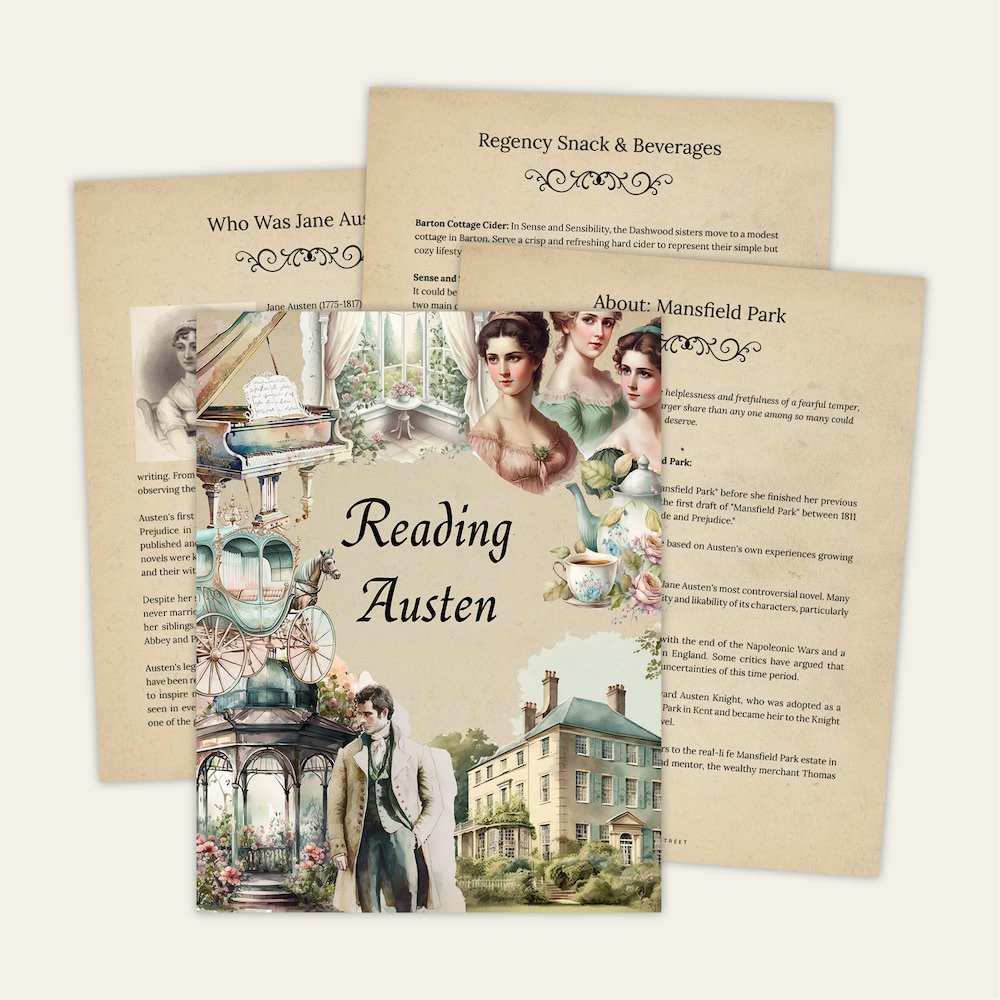Literary Analysis Made Fun: An Approachable Guide for Beginners
Have you ever found yourself staring at a book, wondering how to delve deeper into its meaning?
Wondered how literary scholars unravel the mysteries of books, deciphering hidden meanings and appreciating the artistry within?
Literary analysis is like peeling back the layers of an onion; it helps you understand the deeper meanings, themes, and nuances woven into the fabric of a story. In this brief and approachable guide, we'll unravel the mysteries of book analysis together, using Mary Shelley's timeless classic, 'Frankenstein,' as our guide.
Why Literary Analysis?
Before we dive into the intricacies, let's address the 'why.' Literary analysis is not about overcomplicating the joy of reading; it's about enhancing it. It allows us to decipher layers of meaning, understand the author's intentions, and appreciate the craftsmanship behind every word.
Decoding Stories:
Literary Analysis for Beginners
1. Getting Started: Know Your ABCs – Author, Background, and Context
Author Insights
Understanding the author's life can offer valuable insights into their work. For instance, Mary Shelley's tumultuous life influenced the creation of 'Frankenstein.' Her experiences, emotions, and societal context are reflected in the novel.
Background Check
Consider the historical and cultural context of the time when the book was written. 'Frankenstein,' penned in the early 19th century, reflects the scientific advancements and societal fears of that era.
Context Matters
Examine the broader literary context. What genres, movements, or styles influenced the author? Shelley's 'Frankenstein' was born during the Romantic era, characterised by a fascination with emotion, nature, and the supernatural.
2. The Plot Unveiled: Exploring Characters and Plot Twists in Literary Analysis
Characters Are Key
In the realm of literary analysis, characters serve as the beating heart of a narrative, breathing life into the story's thematic elements. Whether heroes, anti-heroes, or villains, characters contribute to the narrative's depth and complexity.
Unraveling the Protagonist: Delving into Character Traits and Motivations
The protagonist's traits and motivations are essential aspects of character analysis. Understanding what drives them, their strengths and flaws, provides insight into the story's core dynamics. For instance, in Mary Shelley's 'Frankenstein,' the protagonist, Victor Frankenstein, is characterised by unbridled scientific curiosity and ambition.
Exploring the Antagonist: A Journey into the Depths of Complexity
On the flip side, antagonists add layers of complexity. They challenge conventional notions of good and evil, forcing readers to confront moral ambiguity. In 'Frankenstein,' the Creature, Victor's creation, embodies this complexity. Despite his monstrous appearance, the Creature elicits empathy, prompting readers to question preconceived notions.
Plot Twists and Turns
Key Events: Pivotal Moments that Shape the Narrative
Identifying key events in a story is crucial for unraveling its tapestry. These events often mark turning points, shaping the characters and the overarching themes. In 'Frankenstein,' a pivotal moment is the successful animation of the Creature. This event not only signifies a breakthrough for Victor but also sets the stage for the tragic trajectory of the narrative.
Unmasking Motivations: Understanding Character Drives
As characters navigate the plot, their motivations drive the story forward. Examining these motivations unveils the intricacies of their decisions and actions. In 'Frankenstein,' the Monster's relentless pursuit of revenge becomes a powerful motivator. It challenges readers to explore the thin line between victim and perpetrator, adding layers of moral complexity.
Crafting Suspense: The Author's Literary Expertise
A well-crafted narrative often hinges on the author's ability to build suspense. Each twist and turn is a carefully constructed element contributing to the overall tension. In 'Frankenstein,' Mary Shelley masterfully uses these elements to keep readers engaged. The suspense serves not only to captivate but also to offer a deeper exploration of the novel's themes.
3. The Language of Literature: Style and Themes
Decoding an author's style and exploring themes goes beyond appreciating literary techniques. It invites readers to engage with the narrative on a deeper level, understanding the emotions conveyed, the images painted, and the profound ideas expressed.
Authors' Unique Palette: The Artistry of Language
Literature is a form of art, and authors are artists wielding a unique palette of words. The style of an author is their distinctive voice, a fingerprint that distinguishes their work from others. In 'Frankenstein,' Mary Shelley showcases a masterful use of language to convey her narrative. Her style goes beyond mere storytelling; it creates an immersive experience for the reader.
Shelley's language in 'Frankenstein' creates a Gothic atmosphere that envelops readers in a world of eerie beauty and suspense. Descriptive and vivid language paints detailed pictures, allowing readers to feel the chill of the wind, hear the creaking of doors, and sense the looming darkness. For instance, in describing the desolate landscapes and the Creature's appearance, Shelley's language heightens the emotional and atmospheric impact of the narrative.
Tone, Imagery, and Symbolism: Peeling Back the Layers
Analysing an author's style involves paying attention to three key elements: tone, imagery, and symbolism.
Tone: It reflects the author's attitude toward the subject matter. In 'Frankenstein,' Shelley's tone fluctuates between the awe of scientific discovery and the horror of its consequences. The shifts in tone contribute to the story's emotional depth.
Imagery: The use of vivid mental pictures. Shelley's vivid imagery in 'Frankenstein' extends from the grandeur of natural landscapes to the ghastliness of the Monster's creation. These images evoke powerful emotions, drawing readers deeper into the narrative.
Symbolism: Authors often embed symbols that carry deeper meanings. In 'Frankenstein,' symbols like the Creature itself or the pursuit of forbidden knowledge symbolise broader themes and societal concerns. Unraveling these symbols enriches the reader's understanding.
Unearth the Underlying Themes: Beyond the Surface
Themes are the universal concepts explored within a narrative, representing the underlying messages and ideas that authors wish to convey. One central theme in 'Frankenstein' revolves around the repercussions of unchecked scientific ambition. Victor's relentless pursuit of knowledge leads to unintended consequences, raising questions about the ethical boundaries of scientific exploration. The novel explores the broader theme of the pursuit of knowledge itself and addresses the loneliness experienced by the Creature, a consequence of Victor playing God. This theme forces readers to confront ethical questions surrounding the creation of life and the responsibility that comes with it.
4. Between the Lines: Symbolism and Allegory
Books as Intricate Puzzles: The Art of Symbolism
Within the pages of a book lies a hidden language, a tapestry of symbols waiting to be uncovered. Authors employ symbolism as a tool to convey deeper meanings, infusing their narratives with layers of complexity. In 'Frankenstein,' Mary Shelley artfully weaves a web of symbols, inviting readers to decipher their significance for a richer understanding. The Creature emerges as a powerful symbol, representing societal rejection and the perils of unbridled scientific ambition. By delving into the symbolism of the Creature, readers uncover a nuanced commentary on how society treats the unknown and the consequences of playing with the forces of life. The Creature's physical appearance and the reactions it elicits reflect the fear and rejection often experienced by those perceived as different or unfamiliar.
Adding Layers of Meaning: The Power of Allegory
Allegory is a form of extended metaphor where characters, events, or elements in a narrative are used to represent broader abstract concepts, themes, or moral principles. In 'Frankenstein,' allegorical elements add layers of meaning, elevating the narrative beyond a simple tale of horror. Victor's creation of the Creature, for instance, serves as a potent allegory for humanity's attempt to control nature. The allegory becomes a cautionary tale, warning against the arrogance and hubris inherent in tampering with forces beyond our understanding. The disastrous consequences that follow Victor's creation of the Creature highlight the potential dangers of unchecked scientific ambition and the ethical implications of playing God.
5. What’s the Big Picture? Analysing the Message
Consider the Author's Intent:
In any work of literature, the author often communicates a central message or moral. This overarching theme represents the core idea or lesson the author aims to convey through the narrative. It could be an exploration of human nature, a commentary on societal issues, or a reflection on morality. Understanding the author's message requires delving into the deeper layers of the story, examining the characters, events, and overarching themes. This analysis helps readers grasp the intended takeaway and appreciate the work beyond its surface narrative.
In the case of 'Frankenstein,' Mary Shelley invites readers to contemplate the ethical implications of scientific pursuits. The narrative serves as a cautionary tale, urging reflection on the consequences of tampering with the natural order. 'Frankenstein' also emphasises the importance of empathy, particularly in the face of societal differences. The rejection and isolation experienced by the Monster highlight the consequences of a lack of understanding and compassion. The author encourages readers to reflect on the societal treatment of the 'other'—those perceived as different or unfamiliar. The narrative becomes a mirror, prompting readers to question their own capacity for empathy and the potential repercussions of societal prejudices.
Another Example: In a dystopian novel, the author's message might revolve around the dangers of unchecked government power, prompting readers to contemplate the potential consequences of surrendering individual freedoms for perceived security.
Relate Themes to Personal Experiences:
Personal connections in literature involve readers finding resonance between the themes presented in the narrative and their own lived experiences. It goes beyond a mere intellectual understanding of the story; it taps into the reader's emotions and memories. By drawing parallels between the fictional world and their own lives, readers create a bridge of understanding that enhances their engagement with the narrative. This emotional investment can deepen the impact of the story, making it more memorable and thought-provoking.
Relate the book's themes to your own experiences. How do the characters' struggles mirror real-life challenges? 'Frankenstein' encourages us to ponder the consequences of our actions and society's treatment as well as our own biases and attitudes towards those who may be different or marginalised.
Another Example: If a novel explores themes of resilience and overcoming adversity, readers may connect the characters' struggles to their own experiences, finding inspiration in the characters' journeys and gaining insights into their own capacity for resilience.
Congratulations! You've taken your first steps into the enchanting world of literary analysis. Armed with these insights, you can explore countless other books with newfound understanding and appreciation. Next time you pick up a book, remember to savour the layers, dissect the characters, and embrace the beauty hidden within the pages. Happy reading!







